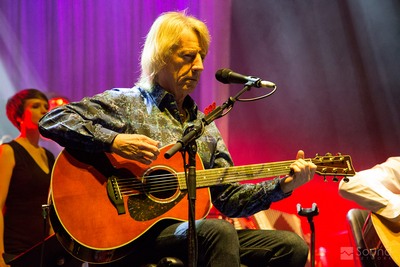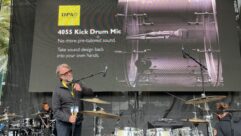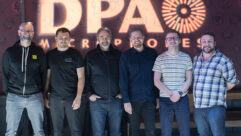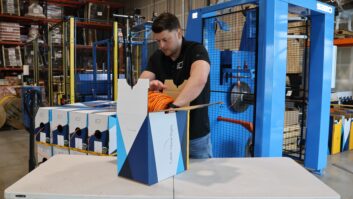
DPA microphones played a key role in ensuring the success of a highly unusual Status Quo tour, which took place recently in the UK.
After nearly 50 years as one of the world’s premier hard rock acts, Status Quo shook everything up in 2014 with the release of Aquostic (Stripped Bare), a fully acoustic album of 25 completely reworked Quo hits. The success of the album led to a well-received show at London’s Roundhouse, which was streamed live to BBC Radio 2 listeners. This, in turn, encouraged the band to play five more acoustic sets around the UK.
Quo’s Front of House engineer, Andy May, says the key to delivering a great tour is to make sure you have reliable microphones.
“The microphones are the first part in the audio chain so they must provide a predictable benchmark,” he explains. “This is really important when you are playing gigs in a variety of venues where the sound system and the acoustics may change.”
May adds that because of the acoustic nature of the performance, he had to rethink certain aspects of the equipment list, in particular the microphones.
“We had an extensive band on stage, which included a string section,” he explains. “The microphones I normally use were not appropriate for strings so I decided to try DPA because they have such a great reputation in the classical world.”
May got in touch with DPA’s UK distributor Sound Network and they recommended d:vote™ 4099 Instrument Microphones – not just for strings, but also for percussion and drums. DPA d:dicate™ 4011 Cardioid Microphones were used as percussion overheads, and the line-up was completed with three d:facto™ Vocal Microphones, which were used by Francis Rossi, Rick Parfitt, and Andrew Bown.
“The d:facto Vocal Microphone has a really clear and natural sound, which makes it ideal for acoustic performances like these,” May says. “I did wonder what Francis, Rick and Andrew would say about using a different microphone because they have been using another brand for years, but I stuck the d:facto’s up at the first rehearsal and used them for the entire tour.”
From May’s point of view, the most impressive feature about the d;facto Vocal Microphone was its ability to seamlessly handle the switch between Andrew Bown’s vocals and his harmonica.
“That did surprise me,” he says. “I usually have to change the EQ on the channel and remove some mid-high for the harmonica, and then change them back again when Andrew starts to sing. But with the d:facto, I didn’t need to change anything because it coped beautifully with the transition. It certainly made my job a lot easier.”
May adds that he was also impressed with the performance of the d:vote 4099 Instrument Microphones. “I had no issues with feedback or spill between the percussion and the strings,” he says. “I also loved the clamping systems for the different instruments – they worked really well.”
May says that he was pleased to have an opportunity to try new microphones and admits that it can be all too easy to stay with what you know.
“People do get stuck in their ways and it can be hard for manufacturers to persuade an old hand like me to give something new a try,” he says. “But on this occasion we were delivering a very different performance, therefore I had the opportunity to experiment. I must say I was really pleased with the outcome.”
-ends-
About DPA
At DPA Microphones we’re passionate about acoustic truth. That’s why every DPA microphone combines ingenious audio engineering with brilliant design and is crafted with more than 200 hands-on procedures at our own facilities in Denmark: to get as close as humanly possible to honest sound.
For more information, please visit www.dpamicrophones.com










